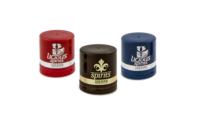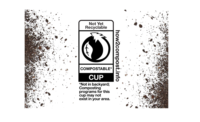Next Generation
Next Generation
Ice cream Stick packaging
By Rob Croft
One of the drawbacks of looking at product development and consumer packaging separately (as is “de rigueur” in the corporate environment) is that there is no real synergy or creation of a holistic product vision.
This trend is particularly evident in the food industry, where the impetus to develop a research-proven product description statement, supported by an industrially feasible product offering, takes center stage. The involvement of packaging design as an integral part of the product development stage can profoundly affect the success and originality of the concept.
For instance, ice cream is predominantly packaged in tubs and on sticks—both of which require very different production lines. The concept (depicted in the illustration) features a four-stick LDPE ice cream mold as a space-efficient, nestable component. It serves as both the ice cream mold and the structural package—providing a new level of protection and upscale imagery for stick packaging and allowing sticks to be filled and conveyed on a rectangular tub line.
After de-nesting, the end panels are folded down to create a dimensionally stable rectangular carton. The vertical mold orientation is conducive to high-speed filling and allows the automated insertion of a molded stick tree that provides a handle for each chamber. The integrity of the structure is further enhanced by the application of a graphic shrink band that covers the void on each side of the package and prevents the end panels from unfolding. Because the frozen sticks are in-board, on the center line, the consumer’s hands are protected from the coldness of the product. The molded LDPE “stick-tub” can sustain the rapid, low temperature effects of the blast freezer—after which a clear styrene dome is snapped into place. Break points around each chamber allow it to be separated from the main package, making it possible for a stick to be placed in its plastic scabbard in the car cupholder and thus expanding usage/occasion opportunities.
The packaging platform can be adapted to provide a new level of protection for premium cone packaging, too. Typically this type of product is made in high numbers during the winter months and consumed during the summer. The design could be adapted to hold six cones, and the vertical orientation could greatly improve the presentation and reduce the damage that can occur when the product is packaged in a paperboard box.
The concept demonstrates how marketers can identify the common denominators between the two product genres and apply reverse engineering to achieve something undoubtedly breakthrough! BP
The author, Robert Croft, is Managing Partner of Swerve Inc., specialists in 3-D brand design. Contact him at 212.742.9560 or rob@swerveinc.com.
Looking for a reprint of this article?
From high-res PDFs to custom plaques, order your copy today!







